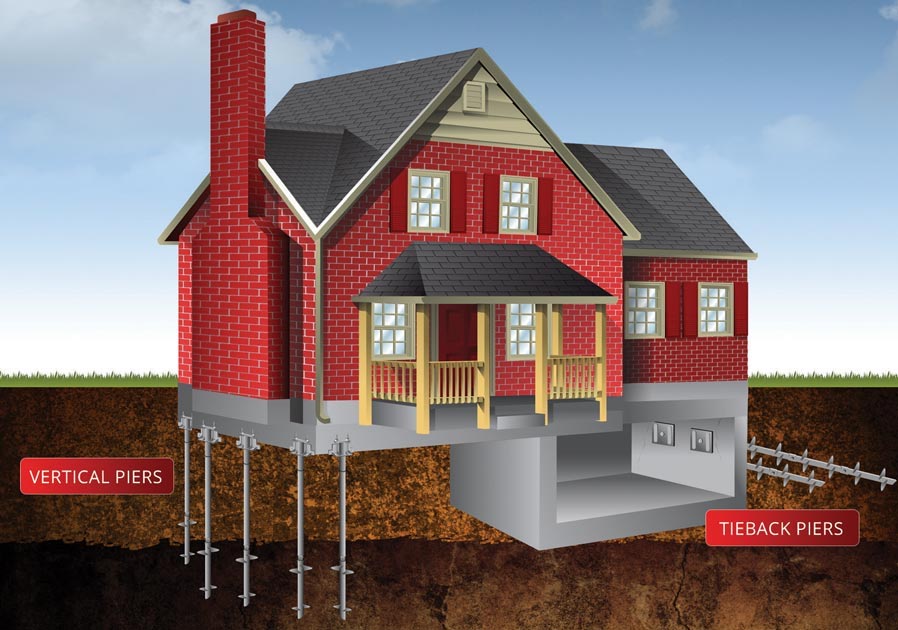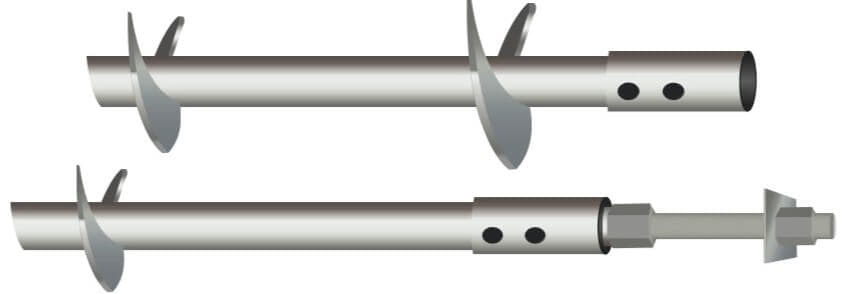Call Toll Free!
(866) 545 - 7753
Helical piers are long, steel foundation pins with helices – just like screws – along their shafts. Using a hydraulic system, helical piers are driven into the soil to a depth below the frost line, providing a firm, unshifting foundation upon which the building’s weight is supported. Frost lines vary by location, and so too do the lengths of the helical pier used for each project. The number of piers required is also dependent on the soil and the weight of the structure they are to support.


Helical piers are permanent solutions to fix foundation issues on existing residential builds. Piers can be used in commercial or new build situations where soil conditions are challenging and a traditional foundation is problematic or just too expensive.
The pier is screwed through the ground outside of your home until it hits stable, undisturbed soil. This point will be below the frost line and the fluctuating water table, which keeps the pier stabilized and immobile.
A pressure gauge system is used to determine the required depth to achieve the capacity necessary to support your property. This will vary, as it’s specific to your property and to the unique soil conditions under your home.
The pier has a steel bracket that is positioned under your foundation’s footing, much like the seat of a chair, to give the wall support and hold it in place. This bracket allows the pier to leverage the resistance between the deep solid ground at the bottom of the pier and your home.
While it depends on the severity of the settling, and the size of the area affected, it’s likely that you will need more than one pier. Piers are installed along the outside of the settling wall, every 5-7 feet across the affected area.
Piers also require excavation outside the settling wall. If the area is relatively clear of obstructions, the piers can be dug by machine. The work can be done quickly and with less manual labor.